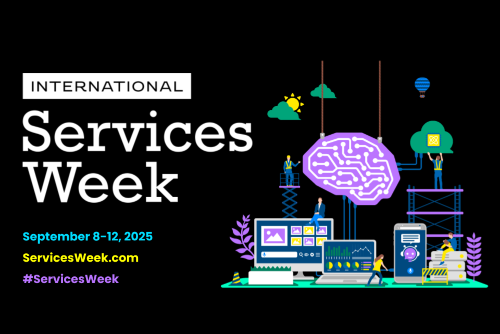Is your customer success metric where it should be?

Thanks to the rise of services-centric and subscription-based business models, it’s plain to see how revenue is so closely tied to customer success and satisfaction. If they don’t succeed, there goes that renewal, revenue, and cash.
Because of this reality, customer success has become a true corporate ethos in many industries and needs to be ingrained throughout a company’s operations. But how well are you really doing it? As someone who deals with customer success data on a daily basis, I thought I’d share some insights.
Here are nine ways to make sure your company helps customers succeed:
1. Adopt a customer success-oriented approach in your business processes
Organizational structures, company cultures, processes, employee compensation plans, information systems, and technology need to be tweaked in order to accommodate a customer success orientation. You need to build customer success goals into each of these elements.
2. Create a customer success mindset
Customer success can’t be the old customer satisfaction promises buried in your mission statement. It needs to be a real, embedded, everyday notion running through your business. Because customer success and financial success are so intertwined, customer success has to be the first goal, and leadership has to make it the focus of the business.
3. Get customer success metrics that matter
In a services-based company, customer success metrics predict a company’s future financial health and allow it to be more proactive. Product adoption rates, project status, usage rates, and service call patterns are precursors to renewal rates, churn rates, and net expansion rates from your customers. Contract renewal forecasts should be weighed against measures of customer success to be accurate and predictable. Customer success metrics now deserve a place alongside bookings and P&L metrics on Executive dashboards to serve as leading indicators. The ability to pull information across all of a customer’s interactions becomes critical to get visibility to these metrics.
4. Think opportunity-to-renewal vs. opportunity-to-cash
The ‘as a service’ model is forcing a longer-term view of customer relationships. Rather than concentrate on Days Sales Outstanding, the critical questions become: Will the customer renew? Have they adopted the product? What is the usage? Have they achieved success? The cash will follow success.
What are the qualities and strategies for true customer-centricity?
5. Invest in people who will drive customer success
The customer success manager is responsible for knowing everything that’s happening with your customers’ relationship from delivery to finance to adoption. Customers love having one central contact. Many organizations have added billable professional services folks to work alongside customers to drive the successful adoption of a product/service. When success happens, these teams hunt for new use cases to expand adoption.
6. Organize around the customer
Instead of organizing your company in silos, we are seeing companies combine sales, customer service, and customer success into one entity. In this model, sales management can’t ‘throw problems over the wall’ to services teams and still meet their individual goals. They exceed if the customer succeeds.
7. Wrap your systems around customer journeys
Many companies split the customer journey across a variety of systems and departments, which makes them appear disjointed to the customer. Not only that, but it makes life more difficult for the people who serve the customer. The information customer success managers need to assess a customer’s situation is spread across too many systems, which they often can’t access. For example, call center and service information is stored in CRM, project information is stored in a project management app, renewal information is stored in billing and contract apps, while receivables and credits are housed in ERP. This fragmentation makes it very difficult to assess and manage the customer relationship.
8. Combine systems of engagement with systems of record
Like the fragmentation above, many companies separate the systems of engagement and systems of record (CRM and ERP) as well. Customer transactions and customer conversations need to be tracked in context of one another, and then made available to everyone (sales, customer success, services, receivables). All these transactions and interactions need to be shared interdepartmentally. What a customer says or feels is important to know when they aren’t planning to renew or why they aren’t paying their invoices. Laura Ramos, principal analyst at Forrester, says that brands will need to “make customer insights accessible to every employee – and partner – to enhance their interactions” if they want to thrive.
By knocking down the walls and eliminating barriers between departments and systems, companies can position themselves to truly understand the state of their customers.
9. Think about customer success as a marketing investment
Selling to happy and successful customers is more cost-efficient than hunting down a new customer. In the financial services space, for example, increasing customer retention rates by 5% can increase profits by 25% to 95%, according to Frederick Reichheld of Bain & Company.
Companies need to focus on customer success as their master metric. It is the predictor of future revenues and business success, especially in the Everything as a Service business world we live in. It’s not just calling and customer satisfaction surveys; it’s a company-wide effort that should be engrained in a company’s culture, organization structure, information systems, investment allocations, and processes. Those that master the customer success mindset, will achieve recurring business success.
Recent Articles
Maximize your Salesforce investment with Certinia






